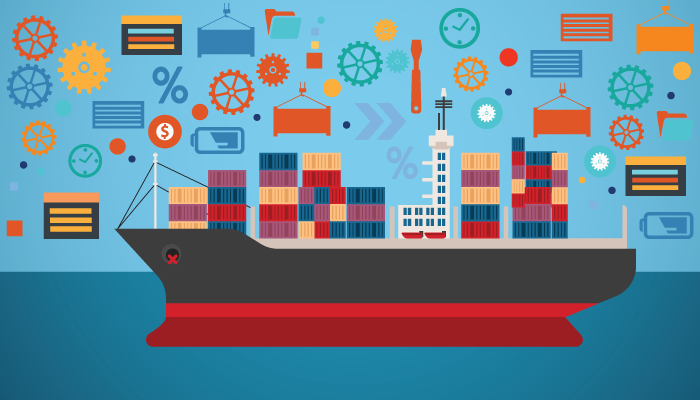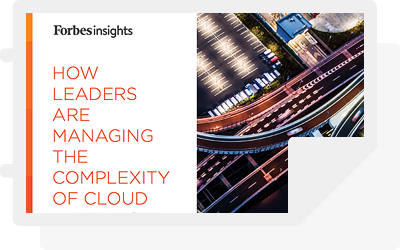
If you haven’t had a chance to read the latest Top 3 report from industry analyst firm Enterprise Management Associates (EMA) – ‘Ten Priorities for Container Management and DevOps in Production and at Scale in 2018’ – you should. It’s packed with powerful insights that will help your company navigate its digital transformation journey. As EMA puts it, the report delivers “… guidance that will help enable enterprises to transform into digital attackers by leveraging containers and DevOps to serve their customers faster, better, and cheaper on a continuous basis.”

Now consider this, when asked ‘Which IT topic is most important to you in 2018?”, the clear majority of IT professionals said container management. Why? EMA’s report indicates that many IT pros think of containers as “a magic potion that enhances software delivery and lowers operations cost. This is expressed in the staggering 45% of survey respondents who indicated that in their opinion, containers will replace VMs within two years.” There’s no doubt; containers are here to stay.

So, if you’re one of the 72% of companies that are struggling, here are some very helpful things to consider:
EMA’s 10 Priorities for Container Management and DevOps in 2018:
1. INTEGRATION WITH EXISTING ENTERPRISE IT
Easy integration of containers with existing data center technologies is the main selection criteria for container technologies today. Primary integration points are: hypervisor, storage, network, hyperscale clouds, server automation, and configuration management tools.
2. CONSISTENT SECURITY AND COMPLIANCE FRAMEWORK
Including containers into the corporate security and compliance framework is the primary container-related pain point today. Difficulties in this area originate from differences in container lifecycle management compared to managing traditional VM environments.
3. PLACE IT OPERATORS BACK IN CONTROL
The ability for current infrastructure, platform, and application operators to manage container environments is critical for most enterprises. Container adoption is rising fast and as more business-critical applications are containerized, enterprises seek scalability, security, compliance, and cost efficiency in container operations, which can only be achieved by leveraging existing IT operations resources.
4. SUPPORT HYBRID INFRASTRUCTURE
Enterprises mostly leverage multiple container services and 53% are running containers on VMs in the corporate data center. Twenty-six percent of enterprises are asking for their container management solutions to also manage FaaS.
5. OPTIMAL KUBERNETES MANAGEMENT
Kubernetes is today’s de-facto standard container scheduling and orchestration framework, consisting of a set of services to deploy and manage containers in production and at scale. The key value of Kubernetes is that it provides developers with standard APIs that enable them to deploy their code, based on policies defined by corporate IT, without having to get involved in time-consuming infrastructure configuration.
6. TRANSITIONING TO MICROSERVICES
Microservices are functional components with standardized API interfaces that can be combined into applications or added to traditional enterprise applications. Each microservice can have its own development and operations team and release cycle. Microservices enable enterprises to rapidly provide new capabilities without requiring a major release of the entire application.
7. APPLICATION-CENTRIC CONTAINER MANAGEMENT
Application-centric container management provides policy-driven deployment, monitoring, alerting, scaling, updates, and upgrades of containerized applications, without the underlying infrastructure imposing restrictions. This means application-centric CaaS management offers an abstraction layer on top of different container services, enabling customers to freely choose between application deployments in the data center or public cloud.
8. TRANSITION TO DECLARATIVE MANAGEMENT
Declarative management relies on developers and operators defining the desired state of an application or infrastructure, instead of “scripting their way there.” This approach relies on involving security and compliance experts, as well as most other development and operations roles throughout the application management lifecycle. Declarative container management constitutes the foundation for rapid cross-platform scalability and portability, as the scheduler, e.g., Kubernetes, simply executes predefined policy rules.
9. LEVERAGING CONTAINERS, PAAS AND FAAS
Sixty-two percent named developers needing more flexibility as their main reason for adopting containers on top of PaaS. The key reason for operators to add containers to their existing PaaS deployment was the easier onboarding of legacy enterprise applications. With many organizations aiming to eliminate all baggage that slows down code releases, FaaS will see a rapid rise in 2018. Ultimately, enterprises will require their IT operations tools to consistently manage VMs, containers, PaaS, and FaaS.
10. PRIORITIZE CONTAINERIZATION
Containers are offering a compelling new option to run applications in a scalable, portable, and cost-efficient manner. However, in order to prevent unnecessary increases in operational complexity, enterprises require a clear business case before containerizing an application.
Source: Enterprise Management Associates, Inc. ‘Ten Priorities for Container Management and DevOps in Production and at Scale in 2018’ Report
What do you think? Are the priorities above in line with your organization’s strategy? I’d love to hear your feedback and questions!
You can access EMA’s ‘Ten Priorities for Container Management and DevOps in Production and at Scale in 2018’ report by clicking here.
Control-M Named Top 3 Vendor


- Makes batch jobs part of the DevOps process from the beginning (shift left) by providing Jobs-as-Code capabilities.
- Enables standard full-stack developers to access and enhance job workflows from within their own development environment.
- Treats batch jobs as part of the overall software test process.
“Many enterprise applications still rely on the successful completion of dozens or hundreds of batch jobs. Control-M Automation API from BMC makes these jobs a part of the DevOps pipeline. Synchronizing the lifecycle of batch jobs and modern cloud native apps is critical in any enterprise.”
– Torsten Volk, Managing Research Director, Enterprise Management Associates







